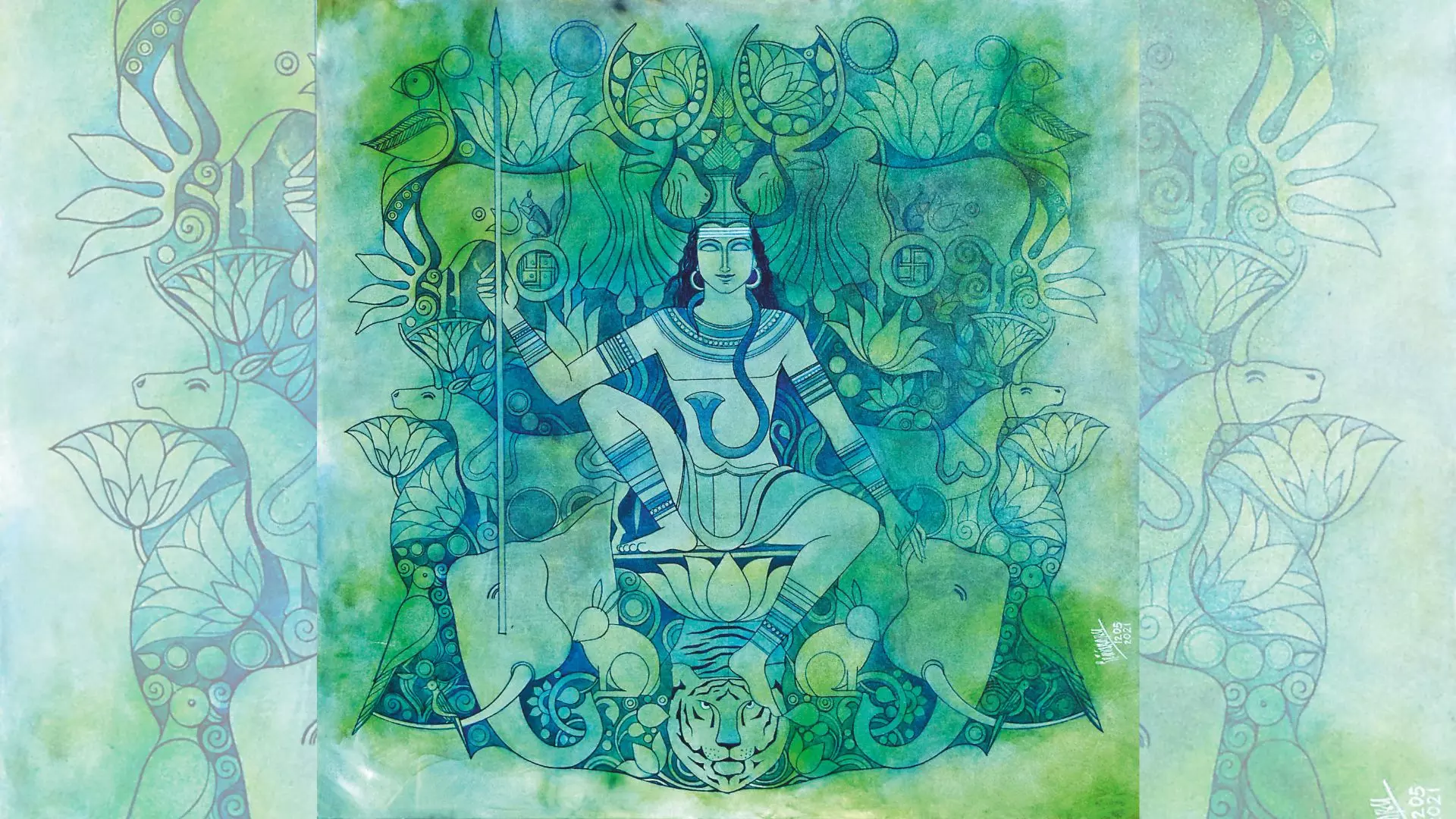Images from Indus
An unusual exhibition takes viewers back to the Indus Valley Civilization, the roots of India’s history. Architect-artist Srinivasa Babu Angara revives primeval concepts of deities, and presents aspects of ancient culture which have blurred with time

Around five years ago, architect and artist Srinivasa Babu Angara wanted to do a show on the Ashoka pillar at Sarnath. In his research, he found the inscription on the pillar was in Brahmi script, used in ancient India. While the idea never came to fruition, during the lockdown induced by Covid, the artist taught himself the ancient Brahmi script as he was fascinated by it.
In his research and learning about scripts and writing systems, he stumbled upon the even earlier Indus script used in the Indus Valley civilization. All the exploration led to his fascination with the past, culminating in his current show, Undeciphered which is inspired by the images, iconography, and information from the Indus Valley.
“We need to know our past to know ourselves,” the artist states and adds, “The origin of our story lies in the past, and when we are cognizant of it, we do not look to the west to seek approval. This is our story, and we need to be aware of it.”
INSPIRED BY THE PAST
The exhibition creates a stunning visual vocabulary of the past. From images and ethereal interpretations of the mythical Saraswathi River to bringing to life the famous form of Pashupati or playful representations of the Unicorn, a staple of Indus Valley imagery, a walkabout in the gallery is a creative lesson in history.
The 54-year-old artist has created 27 paintings and etchings on brass plates over the last four years and builds up great visual drama in his works. Srinivasa Babu is a firm believer that every aspect of our culture has held deep significance and meaning, something that has been lost to us over the years.
He states, “The ritual of aksharabhaysam was done on the mud present on the banks of the Saraswathi River. Over time, it evolved to children writing words on rice because of geography and other reasons. Similarly, oral transmission of knowledge was preferred because other materials used to store knowledge (be it fiber or parchment) were impermanent while the lineage of families continued to ensure that the knowledge was never lost. We need to place these things into context.”
A MEDLEY OF COLORS and THEMES
Context, therefore, is very important for the artist. The image of Saraswathi is therefore similar to the ancient Indian idols in temples rather than the popular ones that evolved over the past century or so. The image of Shiva as Pashupati too keeps the form of the god close to a herdsman surrounded by animals rather than showing him in his later interpretations as a supreme being.
For Srinivasa Babu, who has been painting since he was a child, the exhibition is the culmination of his interests in both art and architecture.
The scale and size of the paintings fulfill the design aspect of his oeuvre, while the storytelling provides an outlet for his art.
Note: The show is on display at the State Art Gallery until August 18.
Artist Srinivasa Babu Angara’s exhibition creates a stunning visual vocabulary of the past. From images and ethereal interpretations of the mythical Saraswathi River to bringing to life the famous form of Pashupati or playful representations of the Unicorn, a staple of Indus Valley imagery, a walkabout in the gallery is a creative lesson in history.

